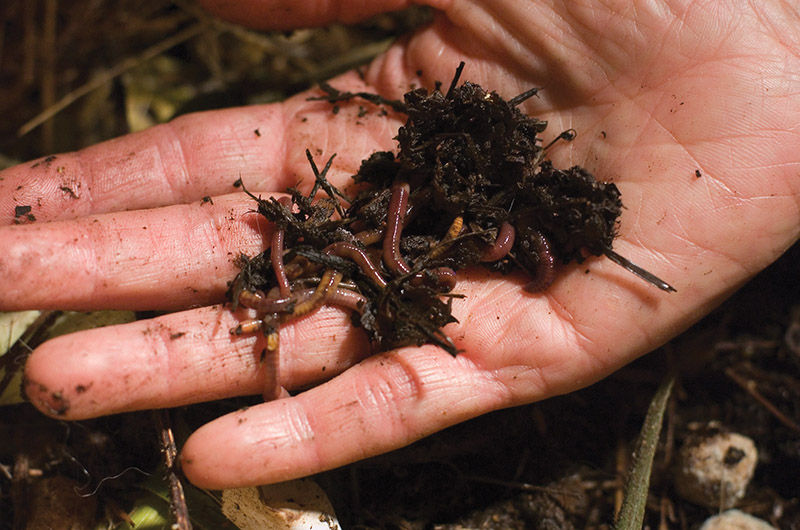Happy red wigglers: How to find them
Happy red wigglers: How to find them
Blog Article
Making Use Of Red Wigglers for Effective Organic Waste Disposal
The usage of red wigglers for natural waste disposal offers a compelling strategy to handling food scraps while advertising environmental sustainability. These worms not only boost waste disintegration but likewise yield beneficial worm castings, which can dramatically enhance dirt health and wellness. Their capacity to process huge volumes of natural material with very little initiative settings them as an available service for houses and communities alike. Understanding the subtleties of establishing up a successful worm container and keeping an optimal environment is critical for maximizing their benefits. The next steps in this procedure might amaze you.
Advantages of Making Use Of Red Wigglers
Among one of the most engaging advantages of using red wigglers for natural waste disposal is their exceptional performance in composting. These worms, medically referred to as Eisenia fetida, are specifically adapted for damaging down natural materials, enabling them to process waste as much as twice their body weight each day. This fast decay not only accelerates the composting procedure but likewise creates nutrient-rich worm spreadings that dramatically boost dirt top quality.
In addition, red wigglers add to a reduction in landfill waste. By diverting natural products from land fills, they assist lessen methane exhausts-- a powerful greenhouse gas. This ecological advantage is crucial in the fight versus environment modification.
In addition, red wigglers are low-maintenance and can grow in numerous atmospheres, making them available for both beginner and experienced composters. Their capacity to recreate rapidly ensures a steady populace, helping with ongoing waste handling.
Setting Up Your Worm Bin
Developing an effective worm container is important for maximizing the advantages of composting with red wigglers. Ensure the bin has adequate drain openings to avoid excess dampness, as red wigglers flourish in a moist yet not soggy setting.
(Lake Hickory Worms,)Following, prepare the bed linen material, which serves as the worms' habitat and food source. Shredded paper, cardboard, and coconut coir are exceptional options. Go for a bedding deepness of around 4 to 6 inches. The bin ought to be placed in a dark, temperature-controlled location, ideally between 55 ° F and 77 ° F, to keep worm task.
Once the bin is set up, introduce the red wigglers, allowing them to adjust to their brand-new environment. A properly maintained bin will certainly not just sustain the health of the worms however also assist in efficient decay of natural waste.
(red wiggler worms)
What to Feed Red Wigglers
An understanding of the ideal diet regimen for red wigglers is crucial for preserving a healthy worm populace and maximizing composting performance. These things not only provide essential nutrients yet likewise contribute to the moisture equilibrium within the worm container.
It is important to avoid particular foods that can hurt the worm population. Red wigglers need to not be fed meat, milk items, oily foods, or refined products, as these can attract pests and develop undesirable odors. red wigglers. In addition, citrus fruits and hot foods ought to be lessened, as their acidity can be destructive to worms
To advertise optimal food digestion, food ought to be chopped right into smaller sized items, assisting in quicker break down and intake. Introducing food in small amounts is additionally crucial; overfeeding can result in anaerobic problems and attract undesirable pests. Checking the worm bin for food usage prices will assist ensure that red wigglers are getting an adequate diet plan while keeping an effective composting setting. Proper feeding methods are essential for promoting a growing community within the worm container.
Keeping Your Worm Environment
A well-kept worm habitat is vital for the health and wellness and productivity of red wigglers. To guarantee optimal conditions, it is crucial to monitor temperature, dampness, and oygenation within the worm container (red wigglers).
A great regulation of thumb is to preserve wetness at roughly 70% to 80%. If the bedding comes to be as well wet, it can lead to anaerobic problems that are harmful to the worms.

Using Worm Spreadings in Horticulture
Rich in nutrients and beneficial microorganisms, worm castings serve as an outstanding natural plant food for horticulture. Generated with the digestive processes of red wigglers, these castings contain an array of important nutrients, including nitrogen, phosphorus, and potassium, which promote robust plant growth. Unlike synthetic fertilizers, worm castings offer a slow-release mechanism, ensuring that nutrients are readily available to plants over an extensive duration, therefore reducing the threat of nutrient leaching and dirt exhaustion.
Along with nutrition web content, worm spreadings improve dirt framework and aeration, boosting moisture retention and water drainage. The microbial life present in worm castings assists to suppress virus and promotes a healthy and balanced soil ecosystem, additional benefiting plant health and wellness. When incorporated into the dirt or utilized as a leading dressing, worm spreadings can considerably enhance seed germination rates, origin development, and total plant vitality.
For optimal outcomes, gardeners must apply worm castings at a price of 1-2 inches per square foot, mixing them right into the soil or including them into potting blends. Overall, utilizing worm spreadings is an environmentally friendly strategy to enriching dirt fertility and ensuring prospering yard atmospheres.
Verdict

Report this page